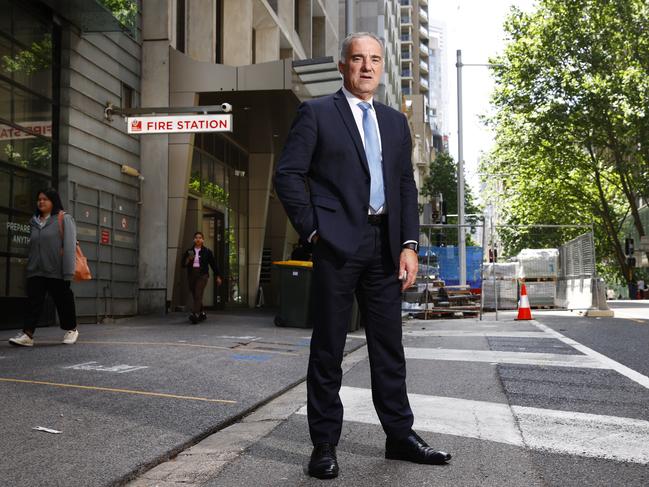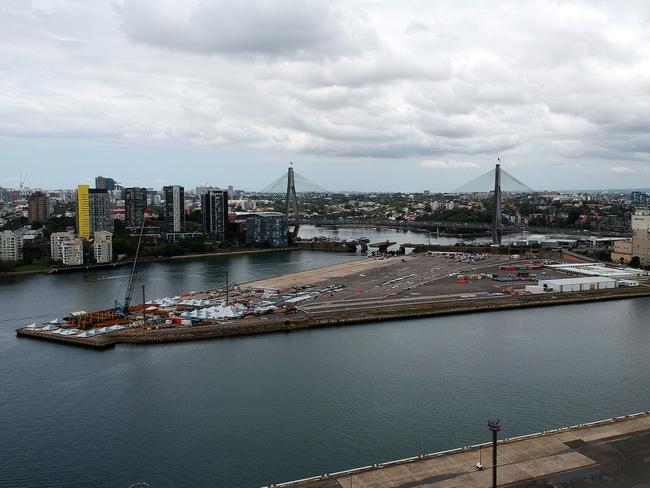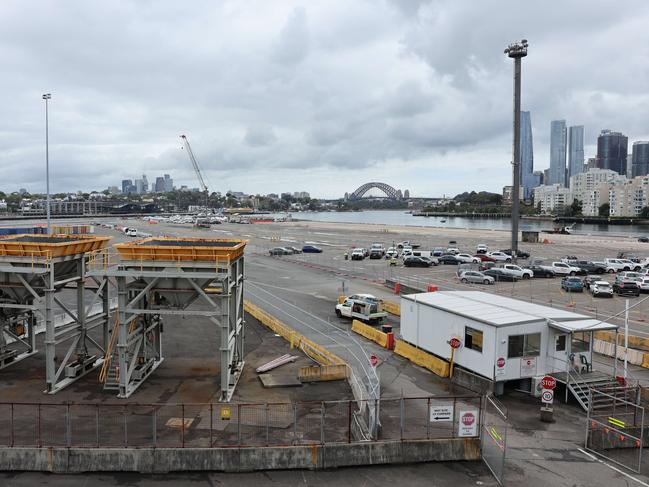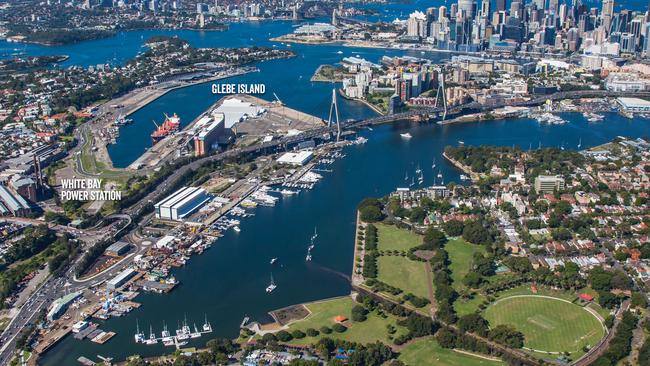Industry and business leaders raise fears that shutting port could deepen Sydney’s housing crisis
Leading industry and business figures have flagged potential cost of living impacts, and a spike in Sydney house prices, if the harbour’s last working port is sold off for high-end apartments.
NSW
Don't miss out on the headlines from NSW. Followed categories will be added to My News.
The NSW government will trigger construction cost blowouts and risk sending Sydney’s housing crisis into an even deeper spiral if it moves to shut down Glebe Island port.
Leading industry and business figures raised the warning last night as a review commissioned by government into the future of Sydney Harbour’s last working port prepares to go before Cabinet.
Anxious stakeholders say the city’s future home buyers will be further tortured if it is recommended the vital maritime supply route be scuttled for high-end apartments.
They claim the cost of cement and gypsum, an ingredient for plasterboard manufacturing, will escalate. The sugar industry would likewise suffer significant supply chain impacts, driving up prices.
In calling for Premier Chris Minns and Planning Minister Paul Scully to retain Glebe Island in its current form, they argue the city will also lose part of its soul if the industrial hub is replaced by a Miami-style millionaires’ enclave.
Business Sydney executive director Paul Nicolau supported a coalition of leaders from the concrete, gypsum, sugar and housing industries to highlight potential cost-of-living fallout.
“Around 40 per cent of the cement needed for home and general construction is landed by ship at Glebe Island,” he said.
“Closing it would see operations go to Port Kembla or Newcastle with big increases in supply chain costs to get building materials and other products back to Sydney.”

Alistair Kelsh, GM at Gypsum Resources Australia, said ceasing port operations would impose significant risks to the delivery of housing and critical infrastructure.
“Anything that increases the cost of home construction is the last thing Sydney needs at the height of a housing crisis,” he said.
Blair Price, Supply Chain & Logistics boss at Cement Australia, added: “The cost of building housing has already endured the most significant cost increases in a generation and home buyers across NSW can’t afford more.”

Paul Gregory, CEO at Sugar Australia, said a working harbour was also crucial for the food and beverage industry.
“The loss of Glebe Island port would drive up prices for consumers and further fuel the current cost of living crisis,” he said.
A planned Bays metro station – to be located between Glebe Island and White Bay and scheduled to open in 2032 – was the catalyst for the review into the future use of the Glebe Island port site.
A NSW Government spokesman said yesterday: “We don’t have an announcement on the Bays West precinct today.
“But we’ve been clear Metro West is a city shaping project, and we need to make sure we maximise the housing around these new transport hubs and we’re looking at the best way to do this.”
The Port Authority of NSW outlined in a submission to the government’s Freight Policy Reform consultation paper in May the impacts involved if Glebe Island port was closed and Sydney-bound materials had to be redirected by road from Port Kembla or Newcastle.
“This would see an estimated 226,000 additional truck movements per year, travelling an additional 18.5 million kilometres per year, leading to increases in commodity costs, traffic congestion, carbon emissions (and) infrastructure costs,” the submission said.
Committee for Sydney CEO Eamon Waterford said managing the harbour and its foreshores required a balancing act.

“We need to be cautious and evidence-informed about any potential changes to the current uses of the Bays precinct,” he said.
“We have to be making decisions not just for the immediate challenges we face but for the impact they will have over the next 100 years. Our kids and their kids have to live with those decisions.”
The Port Authority also detailed in its May submission how Bays Port – Glebe Island and White Bay – currently supports 5,100 direct and indirect jobs “and is projected to contribute $29.1 billion to the Sydney economy over the next 30 years from existing port operations”.
Margy Osmond, CEO of Tourism and Transport Forum Australia, said removing the port would “dislocate a whole group of Sydney workers”.
“Thousands of jobs are related to these port activities and those people won’t necessarily find another happy home in Sydney.
“We also have to look at our harbour as more than just a leisure destination. That’s one dimensional.
“It’s gorgeous, it’s beautiful but the harbour and its foreshores are also interesting and real, they’re not sanitised or vanilla. That appeals to visitors.”

Mr Nicolau said the government faced a difficult choice dealing with a housing crisis and also a “growing shortage” of industrial land.
“Michael Kilgariff, CEO of Cement Concrete and Aggregates Australia, and David Bare, executive director of HIA NSW, both fear that closing it down would increase the cost of home construction and general construction,” he said.
“Business Sydney agrees that this area of working harbour needs to be retained. It is part of our history, part of this city’s soul. If we lose it, it’s gone forever.”
He also suggested any harbour front development at Glebe Island would inevitably be aimed at high-income purchasers and not deliver what Sydney needs most – affordable housing, buy-for-rent or essential workers accommodation.
“We don’t lightly argue against new opportunities for higher density housing,” he said.
“Equally, we can’t afford to lose more industrial land, especially knowing that there is ample opportunity nearby for new housing by delivering the long promised redevelopment of Parramatta Road.”
Do you have a story for The Daily Telegraph? Message 0481 056 618 or email tips@dailytelegraph.com.au
More Coverage
Read related topics:Future Sydney: Bradfield Oration




